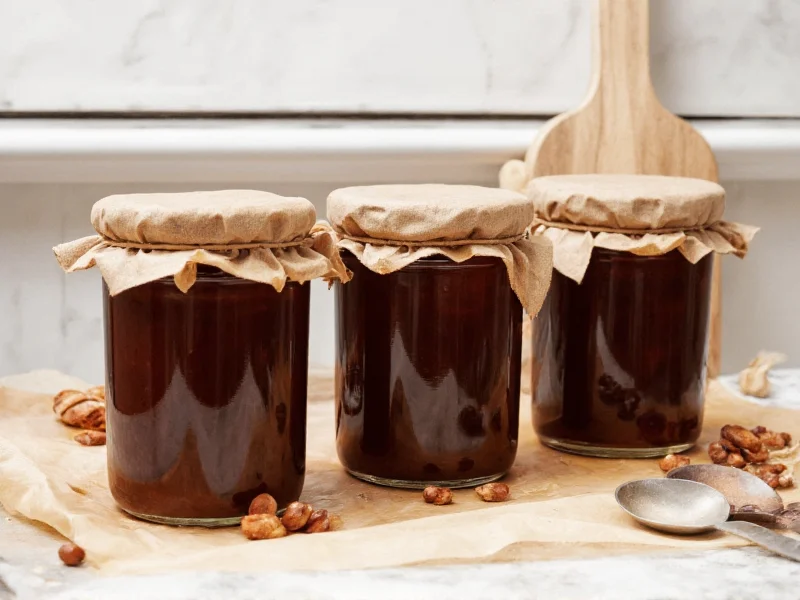Understanding proper molasses storage is essential for maintaining quality in your baking and cooking. While this thick, sweet syrup won't spoil quickly at room temperature, knowing the optimal storage conditions ensures you get the best performance from this versatile ingredient. The high sugar concentration in molasses creates an environment inhospitable to bacteria growth, making refrigeration technically unnecessary but potentially beneficial depending on your usage patterns and climate.
Understanding Molasses Composition and Types
Molasses is a byproduct of sugar refining with varying sugar concentrations depending on the type. Light molasses comes from the first boiling of sugar cane, dark molasses from the second boiling (with slightly less sugar), and blackstrap molasses from the third boiling (with the highest mineral content but slightly less sugar). This composition difference affects storage recommendations.
All molasses varieties contain 65-80% sugar content, which naturally preserves the product. The sugar binds with available water molecules, leaving insufficient moisture for microbial growth that causes spoilage in other products. This scientific principle explains why molasses remains stable without refrigeration.
Storage Recommendations by Molasses Type
| Molasses Type | Room Temperature Storage | Refrigeration Benefits | Expected Shelf Life |
|---|---|---|---|
| Light Molasses | Stable for 6-12 months | Prevents crystallization in humid climates | 12-18 months |
| Dark Molasses | Stable for 6-12 months | Maintains smoother texture | 12-18 months |
| Blackstrap Molasses | May thicken faster | Significantly extends shelf life, prevents separation | 18-24 months |
| All Unopened Containers | Store in cool, dark place | Not necessary | 2-3 years past printed date |
Practical Storage Guidelines
For optimal molasses storage, keep these practical considerations in mind. Always store molasses in its original container or transfer to an airtight glass or plastic container if the original packaging isn't resealable. The container should be clean and completely dry before adding molasses to prevent crystallization.
Temperature consistency matters more than the specific storage location. Avoid placing molasses near heat sources like ovens or in direct sunlight, as temperature fluctuations accelerate quality degradation. In humid environments, refrigeration becomes more beneficial as moisture in the air can cause surface crystallization.
Identifying Spoiled Molasses
While rare, molasses can eventually degrade. Signs that your molasses has gone bad include visible mold growth (extremely uncommon due to sugar content), significant changes in smell (sour or fermented odor), or dramatic texture changes beyond normal thickening. If your molasses develops an off taste, discard it regardless of appearance.
Crystallization or slight thickening doesn't indicate spoilage—it's a natural process that occurs over time. Simply warm the container in a bowl of hot water to return molasses to its original consistency. Never microwave molasses in its container as uneven heating can cause dangerous splattering.
Maximizing Molasses Quality
For frequent users, storing molasses at room temperature provides optimal pourability for recipes. If you use molasses occasionally, refrigeration extends its prime quality period. When refrigerating, always bring molasses to room temperature before using to ensure proper measurement and incorporation into recipes.
Consider your local climate when deciding on storage methods. In cooler, drier regions, room temperature storage typically works well for 12 months after opening. In hot, humid climates, refrigeration becomes more advantageous to maintain consistent texture. Always wipe the container rim clean after each use to prevent sticky buildup that can attract contaminants.
Frequently Asked Questions
Does molasses need to be refrigerated after opening?
No, molasses does not require refrigeration after opening due to its high sugar content which naturally preserves it. However, refrigeration can extend shelf life and prevent crystallization, especially for blackstrap molasses in humid environments.
How long does opened molasses last at room temperature?
Properly stored in a sealed container away from heat and light, opened molasses maintains best quality for 6-12 months at room temperature. The high sugar content prevents spoilage, though it may gradually thicken over time.
Why does my molasses become thick and hard to pour?
Molasses naturally thickens over time as water evaporates and sugar crystallizes. This process accelerates in humid environments or if the container isn't properly sealed. Refrigeration slows this thickening, but warming the container in hot water for a few minutes will temporarily restore pourability.
Can you freeze molasses for long-term storage?
Yes, molasses can be frozen for extended storage (up to 2 years), though this is generally unnecessary. If freezing, leave headspace in the container as molasses expands when frozen. Thaw in the refrigerator before use, as rapid temperature changes can affect texture.
Does blackstrap molasses require different storage than regular molasses?
Blackstrap molasses benefits more from refrigeration than lighter varieties due to its higher mineral content, which can lead to faster separation and texture changes. While all molasses types remain safe at room temperature, refrigerating blackstrap helps maintain consistent quality for longer periods.











 浙公网安备
33010002000092号
浙公网安备
33010002000092号 浙B2-20120091-4
浙B2-20120091-4